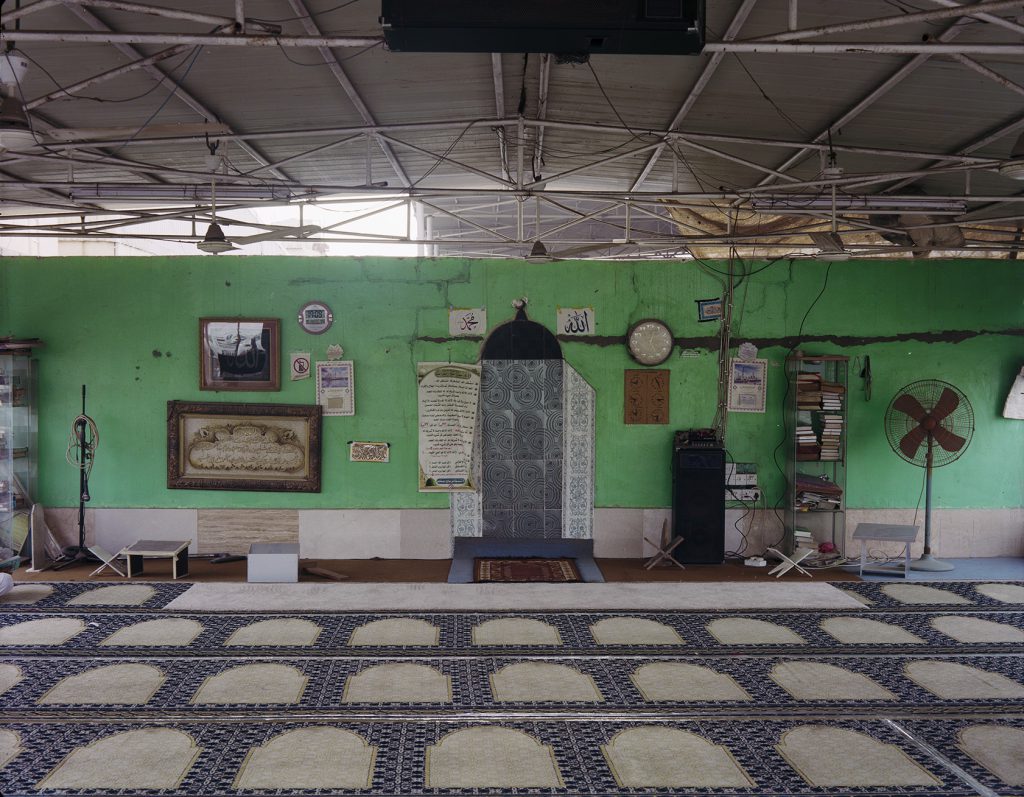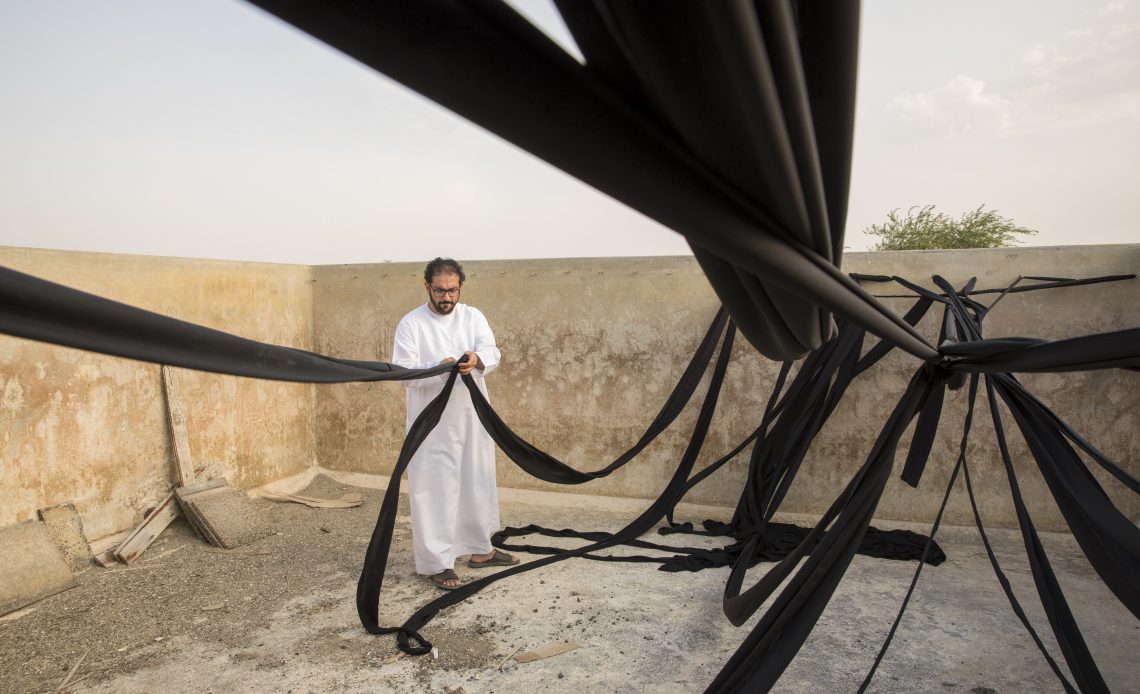Emirati artist Ammar Al Attar reveals how he has become fascinated with using his own body as a means of creative expression.
Canvas: Your show Out of Range was exhibited at 421 earlier this year. What prompted the progression from documenting public and private spaces to turning inwards and using your own body to explore space?
Ammar Al Attar: I’m always thinking of new ways to expand my practice. I didn’t study photography at school, I learned by participating in workshops, and even though I had this interest I was always looking for what was next, for new ways of bringing concepts into my photographs. After my Prayer Room series in 2012, I was looking to do something about prayer itself. For the Salah series, I photographed myself in the act of prayer. From there, I became fascinated by the concept of performance and of performing in front of the camera.
How did you develop these ideas further?
I started to pursue performance art in early 2020 and during the pandemic and lockdown I had a lot of time to research its history and the different artists. I then began to consider how I might perform my own feelings, which made me think about the act of repetition. A part of modern life for many people is going to the office to do repetitive work, but at the same time it’s more than that – sometimes we are comforted by the routine and don’t want to change. So I looked at ways in which I could transfer this feeling to an audience. I used materials in my performances that were part of my everyday office routine, such as the ink stamp. I experimented a lot and used a microphone to record the different noises made by the actions involved, combining photography, video and sound.
Do the shapes that you create in your work have particular meanings?
I’ve always had a fascination with circles. The circle embodies the idea of repetition, but of course also represents the circle of life. There’s also the line and the square, which to me convey the boundaries that I either put myself in or those that separate ourselves from others.

In Prayer Rooms, you’re documenting these public yet private spaces, but how did you feel when you turned the camera on yourself to share intimate moments, such as in the Salah series or Moving?
In 2011 I began Visual Diaries, in which I would share aspects of my daily life such as having my lunch or going to the tailors. At the time people would even laugh, because it’s capturing something very private. Now with Instagram, there is no privacy. My recent performances took a lot of courage to show these moments, but it’s important because I believe that, as artists, we need to challenge people’s thinking. For example, lying down in the falaj for Moving was an especially difficult moment and after moving through the cement channel my shirt had some blood on it. This is one of the qualities of performance art, in that you give the audience more than just a photograph. It’s much more intimate than that.
Your outdoor works seem to be more physically demanding than those indoors. How did you decide on the different locations and the actions you performed?
At first, my performances were in my studio. What made me move outdoors were the circles. I created a circle around me and continued doing this until I lost my balance, so I decided that I wanted to take the performance and experiment with movement outside in a different environment.
I went to a place in Sharjah that used to have a lot of farms but where there is now a great scarcity of water. There are empty concrete tanks that were previously used to hold water for irrigation and I used one of these in my work, Covering. This is the work that made me shift from using tools, such as the stamp or charcoal, to thinking of my body as a tool to perform the action. The work took time to prepare and the performance was almost half an hour long. I had initially planned for the tank to be covered by a black cloth, cutting the fabric to fit the space, but when I went to do the actual performance it didn’t work. I hadn’t taken into consideration how the fabric would react to the wind, which was blowing it about. That was a turning point, because I didn’t stop the performance and continued to cover as much as I could, even as the fabric was getting tangled. I wanted to communicate the sense that this is our life, that we try to fix things and carry on, even as other problems arise. Since then I have continued to use my body as a tool for performance. In my work Moving, I moved through the falaj, an empty water irrigation channel, trying to adapt my body to the space. It has different meanings; you can relate to it in terms of the environment, or of adapting to culture or society.
What is the importance of the act of covering?
Sometimes we need to conceal something, whether it’s from the wider community or simply people hiding things from one another, but how can I communicate this in a subtle way? There are a lot of sensitive things that we might not be able to talk about.
This interview first appeared in Canvas 104: Let’s Get Physical – The Body in Art



